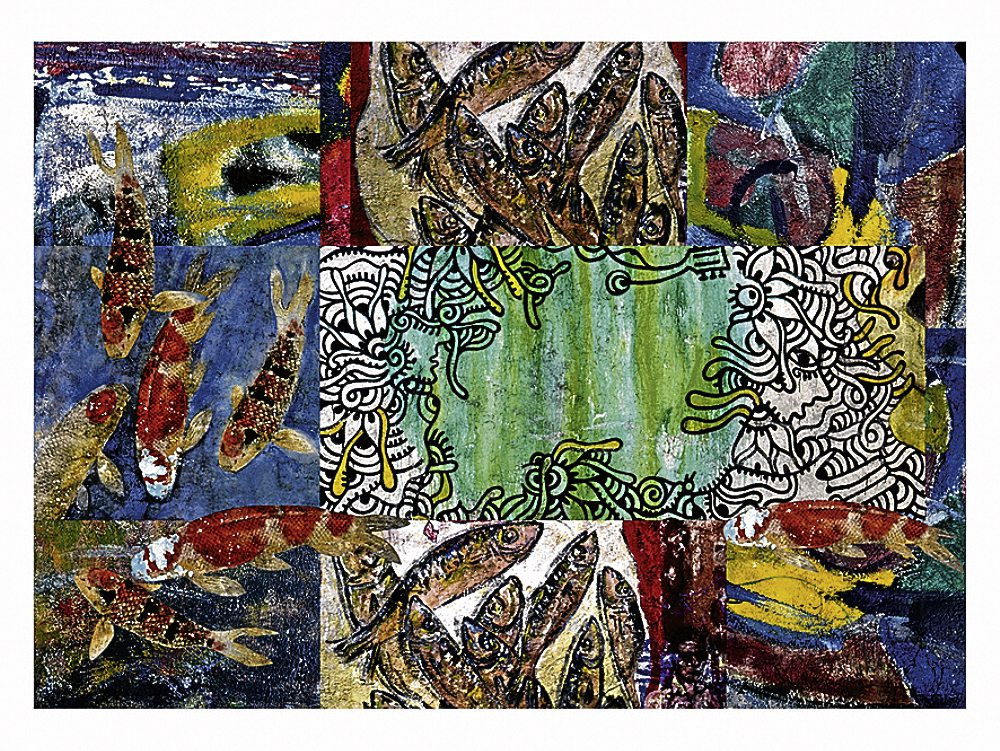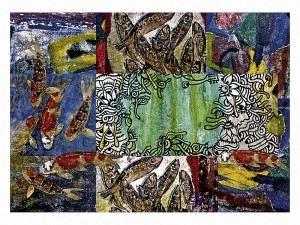 The joint exhibit of photographer Jaime Zobel and painter Igan D’Bayan, recently at the lobby gallery of Ayala Museum in Makati City, is a study in counterpoise.
The joint exhibit of photographer Jaime Zobel and painter Igan D’Bayan, recently at the lobby gallery of Ayala Museum in Makati City, is a study in counterpoise.
It has been said that the two artists are art worlds apart—Zobel with his neat images and D’Bayan with his horrid visages; the former an ode to joy, the latter a dirge of doom.
That visual tension of form and deformation, which respectively conform to our conventional notions of beauty and ugliness, has been carried over to this exhibit, eponymously titled “Zobel-D’Bayan.”
As Zobel himself remarked at the show’s opening: “Indeed, this exhibit is about contrasts—contrasts which exist in our societies, in our beings and our lives.”
Here the two artists appear to have been joined only by a tenuous connection: Both drew inspirations from spray-painted graffiti and murals by anonymous artists, and both found their subjects in Spain.
Zobel is known for his distinctively lit portraiture and imagery of ordinary objects magnified into abstracted forms and patterns. So it’s a jolt when here the viewer comes face to face with something radically new in his art-making.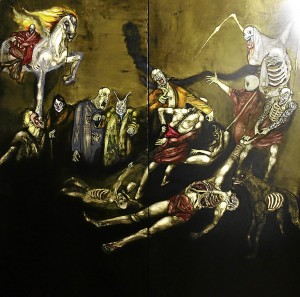
At first glance each untitled piece looks like framed tapestry. One has to get closer to the artwork to see that it is a photograph.
Newfound art form
While in Madrid recently, Zobel visited the old Latin Quarters hoping to photograph 19th-century façades. He was disheartened to find that they no longer existed or were already dilapidated.
As he tells it: “Suddenly my eyes caught on various forms of drawings and quasi-graffiti artworks. It took me a while to conform to what I was seeing… I wanted to try to see what possibilities I could find with my creativity.
“Looking at the façades of small restaurants and stores in old Madrid, I started finding some extraordinary graffiti and began photographing them. Before I knew it, I was doing compositions out of graffiti, and this led me to other artistic expressions on walls, floors, textures…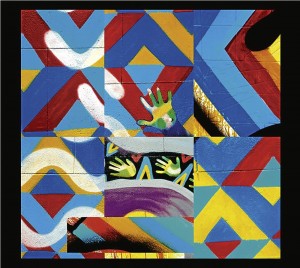
“My next travel was in London, where I walked down Portabello Road. There, too, I found ample material for my newfound art form. On my return home to Manila, my interest in such public display of art was piqued.”
He found it in the murals painted by the Blumentritt artists along Nicanor Garcia Street in Makati City, which he duly integrated into his work.
The heaps of photographs he had taken he composed into collages and montages. The result is what he calls an “exhilaration of colors,” what remains “fresh, joyous and possible in art.”
These are a harmonious melange of images ranging from Abstract Expressionism to Pop Art, Graffiti Art and Hallmark aesthetics, from rough-hewn folk paintings to delicate images in the styles of the Spanish masters.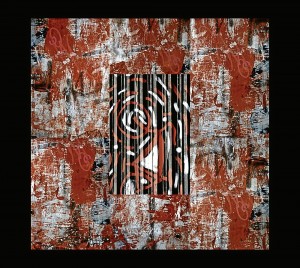
Zobel considers his new artistic pursuit “a respite from my usual sedate and organized style,” though. As if he were “quietly listening to Mozart in my room but got distracted looking out my window where three street musicians were happily playing in a calypso band.”
Punk aesthetics
D’Bayan was also in Spain, en route to Santiago de Compostela, when he was inspired to create his latest pieces in oil on canvas.
As he relates the evolution of these particular paintings: “Our group stayed in old monasteries that were transformed into plush Parador hotels. There I saw 16th- or 17th-century paintings by unknown Spanish artists in the manner of El Greco and Velásquez. None of the stuff we see in art books.”
On his return home, he started painting images from horror movies, graphic novels, music video, and “tried duplicating the lighting, choice of palette and brushstrokes of those anonymous painters.”
One can see he is now wielding if not masterful then certainly confident brushwork. He achieves visual texture not by way of impasto or mixed media (as many a lazy artist is wont to do) but through alternating fine line and broad brushstroke, chiaroscuro and color tonality.
 His is an art that takes on all media, having been influenced by as far afield as Poe, “Blue Velvet,” HR Giger, Jane’s Addiction, “Naked Lunch,” goth, death metal and the punk aesthetics.
His is an art that takes on all media, having been influenced by as far afield as Poe, “Blue Velvet,” HR Giger, Jane’s Addiction, “Naked Lunch,” goth, death metal and the punk aesthetics.
Expressionist distortion
In his portraits in this exhibit, chiefly in monochrome of brown, gray or black, D’Bayan is approaching the expressionist distortion of visage by Francis Bacon, those single figures in isolation and despair. Compare, for instance, the horrific “Dog of War” and “Insane Clown” with Bacon’s “Three Studies for Figures at the Base of a Crucifixion.”
And here the shadows of the Spanish masters are indelible: the sickly green and blue of El Greco; the ugly faces of Goya; the bleak planes of Velásquez.
The centerpiece is a 7 ft x 7 ft revisioning of Juan Luna’s “Spoliarium.” The figure composition is essentially the same except that now the gladiators have been transformed into skeletal forms and the artist has added the figures of Death and a Horseman of the Apocalypse (a bit redundant, this).
A delicate balance pervades this exhibit. Zobel’s colorful crowded images dramatically offset D’Bayan’s dark-toned isolated faces.
While Zobel captures what is visible but often left unseen, D’Bayan tries to make visible what is usually hidden. They may be working in opposite directions but the connection is not really tenuous at all.

